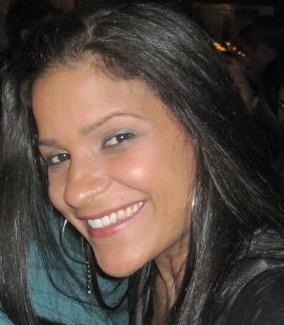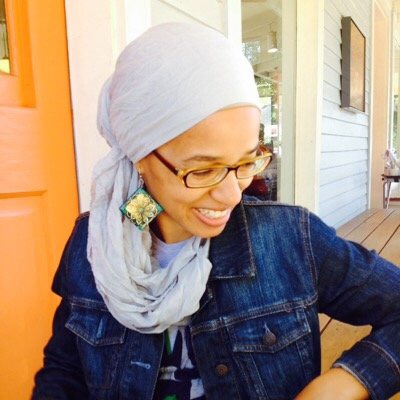I’ve been so afraid of being like her, terrified really, that I’ve tried to ignore, deny the many ways that I am like my mother. From my hands, small and stubby, heavy, with a thick palm that can do (and have done) much damage to those who dared to challenge me…like my mother did to me with her hands.
To how I eat, my right leg tucked under me, the left propped up so my knee is under my chin.
How for so long any emotion that shook me I changed to anger, because anger I could deal with, anger I could process. Pain? No. Confusion? No. Sadness? No. Isolation? Please, no.
When I told my mother I was a writer, she shared a stack of papers where she’d started recounting the stories of her life. I’d heard many of them when I was growing up. The ones she told when she was calling us ungrateful. The one about her one pair of shoes. The story of her choking while she was in the latrine: When she pushed the splintered door open with her scrawny leg, my great-grandmother, Tinita, ran over and pulled a two-foot tape worm out of her mouth. Imaginate eso!
And the stories of her sad Christmases en Honduras. The doll head she’d been given at the Catholic Church up the road. The one abuelita sewed a body for out of old rags and dirt.
The story of when she stole a gallina from a neighbor because she wanted meat so badly, it had been so long since she’d had any. They ate hen stew that night, but when abuelita got word that a hen was missing from a neighbor’s patio, she knew. She beat mom and made her work for the neighborhood until the hen had been paid off. Seremos pobre pero pillos no somos.
***
Guided by my heritage of a love of beauty and respect for strength—in search of my mother’s garden, I found my own. ~Alice Walker, In Search of our Mother’s Gardens
***
I grew up in a railroad style apartment in Brooklyn. We couldn’t do much to keep our home from falling apart, the walls from crumbling, but since we lived on the first floor, my mother took it upon herself to clean up the backyard and plant a garden every spring.
I remember seeing her cleaning the paved part of the yard. Throwing out the trash that had piled up over the years. She tossed the stacks of plywood and plant pots over the flimsy fence that separated our yard from the junk yard next door, the one I started venturing into when I was seven, disobeying my mother’s direct orders to stay out because it was so dangerous with the cat-sized rats that made their homes among the piles of wood, rusted nails jutting out at all angles, rusted license plates, tires, all sorts of trash, including needles I stepped over carefully. When I wanted to do something, I did it, no matter what the repercussion.
It took days for mom to till the soil that had been packed firmly by the snow of the prior winter and the sneakers of us kids. It was the most patient I’d ever seen my mother. She used the old shovel she’d found in the corner, left by some now long gone tenant. I watched her use her right leg to push the shovel into the hard ground and bring up the dark soil underneath, squirming earth worms came up with the mixture.
And when the ground wouldn’t give, she got on all fours and used the hand shovel and her hands. She did this to both sides of the yard, which was separated down the middle by a paved walkway that led to a red ladder that went all the way up to the third floor (that’s where the clothes lines from the apartments were attached). The right side she toiled right up to the gate that separated our yard from the yard of the building behind us. The left side she toiled right up to the base of the plum tree that was my escape for all of my childhood.
Mom went out and bought the seeds. I don’t know how she figured out what she would plant or how she would arrange the seeds, but mom was deliberate in her choices. She never let me go buy the seed with her but I’d watch as she laid the envelopes of seeds out on the wooden table Millie built and lacquered when we first moved into the apartment. Each packet had a picture of what the seeds would become, if given rich soil and water and love: peppers, tomatoes, eggplant, squash, cucumber, herbs like peppermint, rosemary, thyme and recado, and flowers like sunflowers and geraniums and so many I can’t name.
She would bring the seeds out into the yard. First, she separated the rows by furrowing a shallow hole between each. She used her hand shovel to create small holes in one row which she put the seeds into. She did this softly, handling the seeds like they were newborn children.
The herbs and flowers went in the front rows closest to the gate that separated the garden from the paved section of the yard. The vegetables followed. Tomatoes first, next the peppers, pumpkins and the rest.
Mom was more gentle with the garden than she ever was with me.
In the winter, she lined the windows with her potted plants. She propped them on wooden boards, using the gaps in the security gate as leverage. These too she doted over in a way she never did me.
Mom has always been an avid reader. I remember her reading magazines and books every night, with the reading glasses she bought at Woolworth, trying on different pairs until she found the one that helped her see best. (Why bother going to an optometrist?)
As an adult, she, my aunt and I circulated books among ourselves. Mom was the one that first told me about ‘The Kite Runner’ by Khaled Hosseini, I gave her Junot Diaz’s ‘Drown’. This was before she went back to the Kingdom Hall. Now all she reads is ‘The Watchtower’ and ‘Awake’ magazines. Their books. Their propaganda.
Mom bought the paint-by-number canvases from time to time. On the boxes were images of kittens playing with balls of yarn and flowers in simple brown pots. What the numbered canvases would look like once she painted them, which she did every night, under a bright light in the living room. I didn’t dare bother her. That was her alone time.
I never attributed my creativity to my mother. My love for all things art-related, from reading to dance to my present want-to-take-a-painting-class. I’ve never wanted to attribute it to her.
My daughter and I create collages together. I’ve created dozens of collages of pictures over the years. Hung them around my house. Gifted them to friends. These inclinations didn’t come from out of thin air. I learned them from somewhere.
My willingness to experiment in the kitchen, throwing spices and meats together in pots to create delicious meals. This is how I learned how to cook. Through experimentation, trial and error.
I am creative because I inherited it from my ancestors who even when they were beaten down by the world, found ways to keep their creativity alive. Even when a paint brush wasn’t present, or a pen, or a dance studio.
I am an artist because I inherited the gift from my mother, recognized my own want in her hands when she sewed flowers onto cloth napkins.
There is so much of her that I’ve never wanted to be like. Now I see there’s much I am thankful for having learned, witnessed, even if she didn’t let me share it with her. I see how her creativity helped her survive. And how seeing my mother’s creativity helped me find my own way of survival.
I write to save my life. Every single time. Thanks to my mother.
—
Vanessa Mártir is currently completing her memoir, A Dim Capacity for Wings. She has penned two novels, Woman’s Cry and To Play Write, and also co-authored Do Something: A Handbook for Young Activists, which won The Carol D. Reiser Children’s Book Award was nominated for a 2011 Books for a Better World Award. Vanessa is a mother and a four-time alum of the Voices of our Nation’s Arts (VONA) writing workshops. She is the co-editor of the VONA newsletter, works as a teaching artist throughout NYC public schools, and facilitates the Writing Our Lives Workshop, which she created, at Hunter College. She blogs, here.












